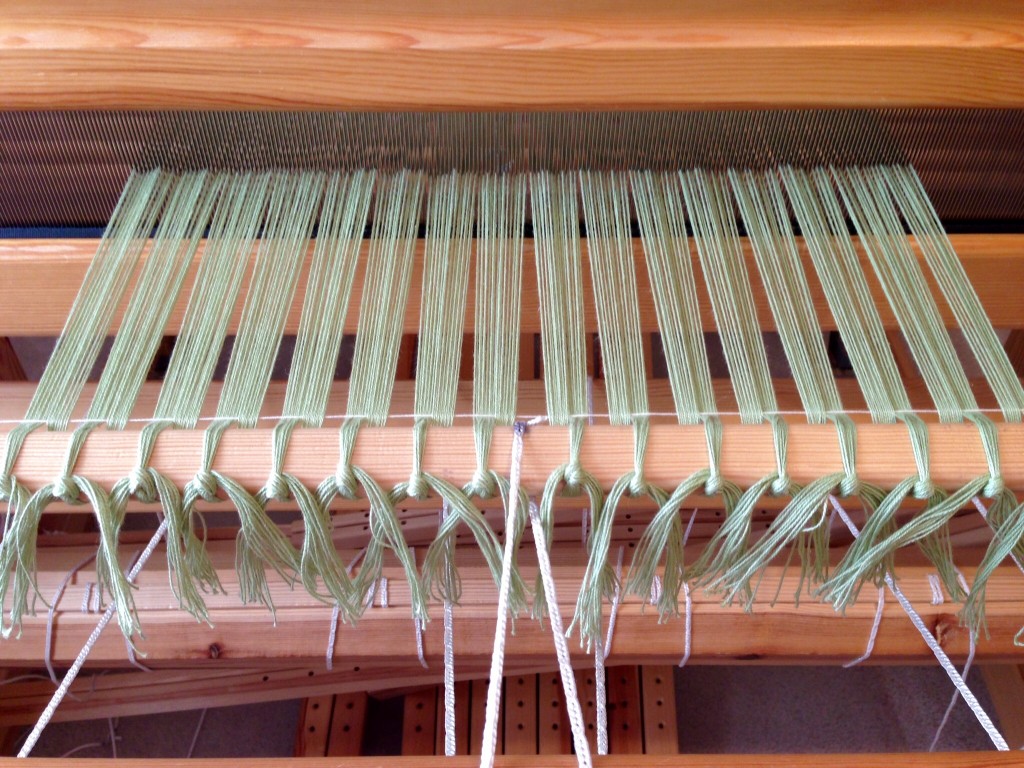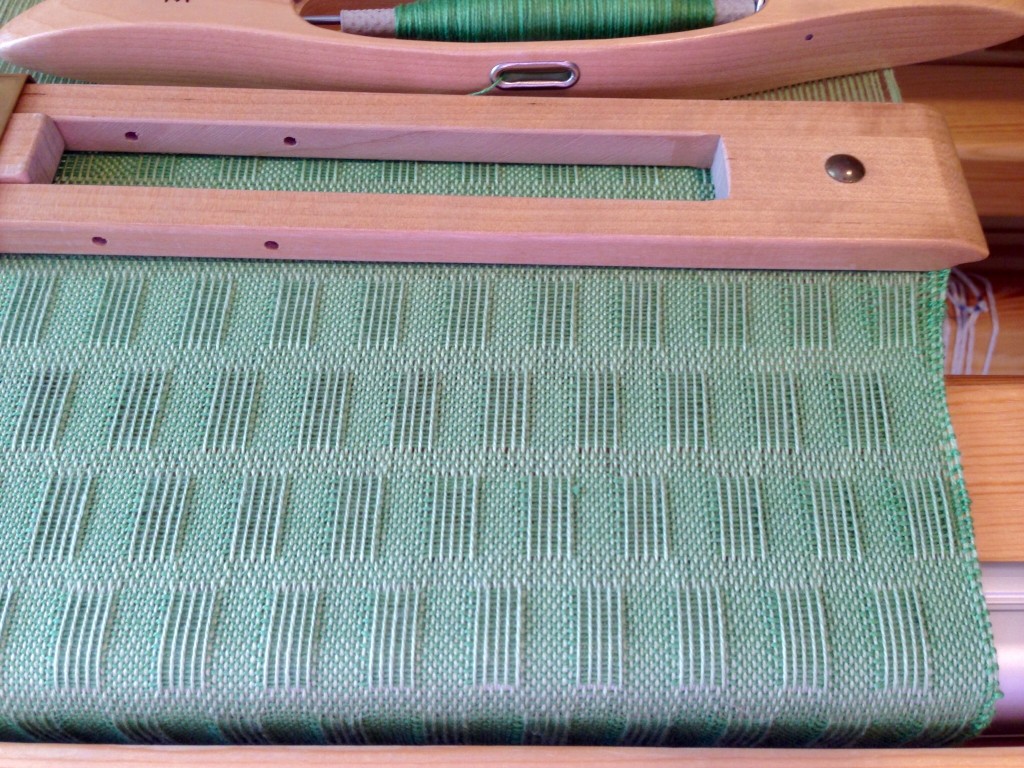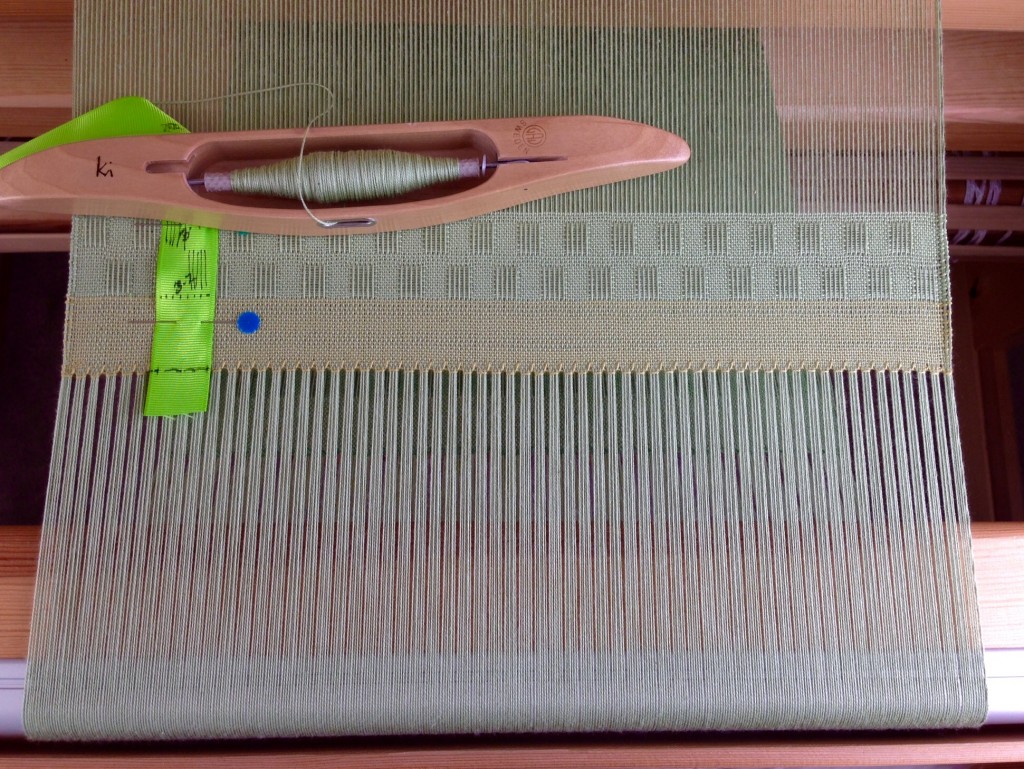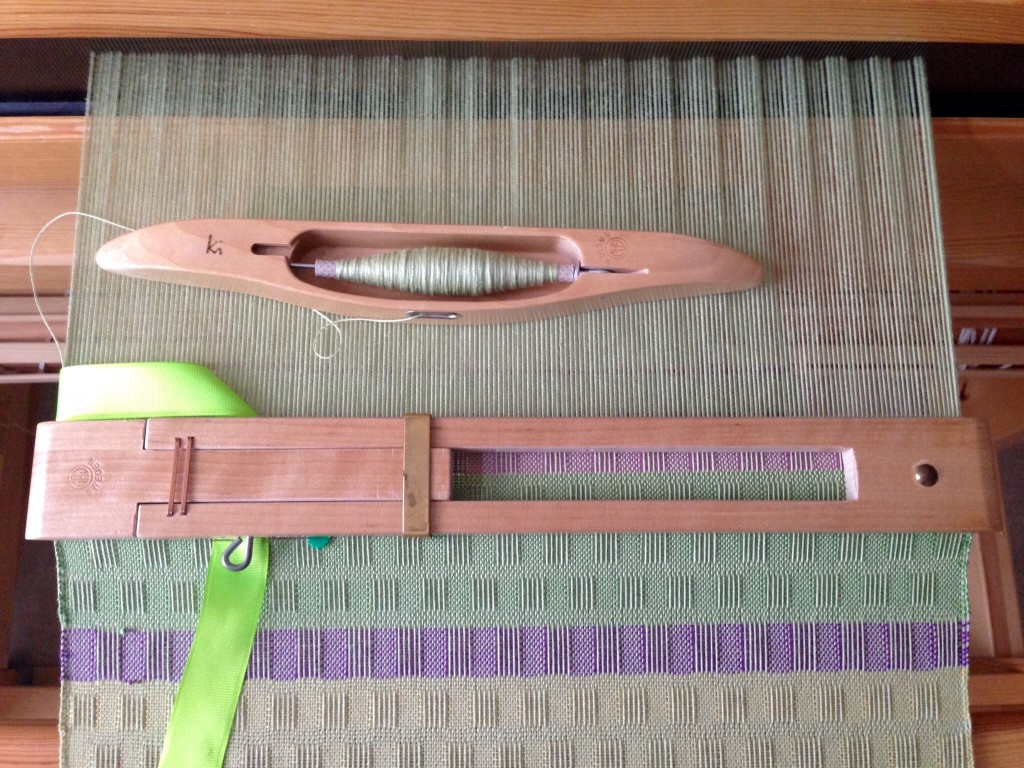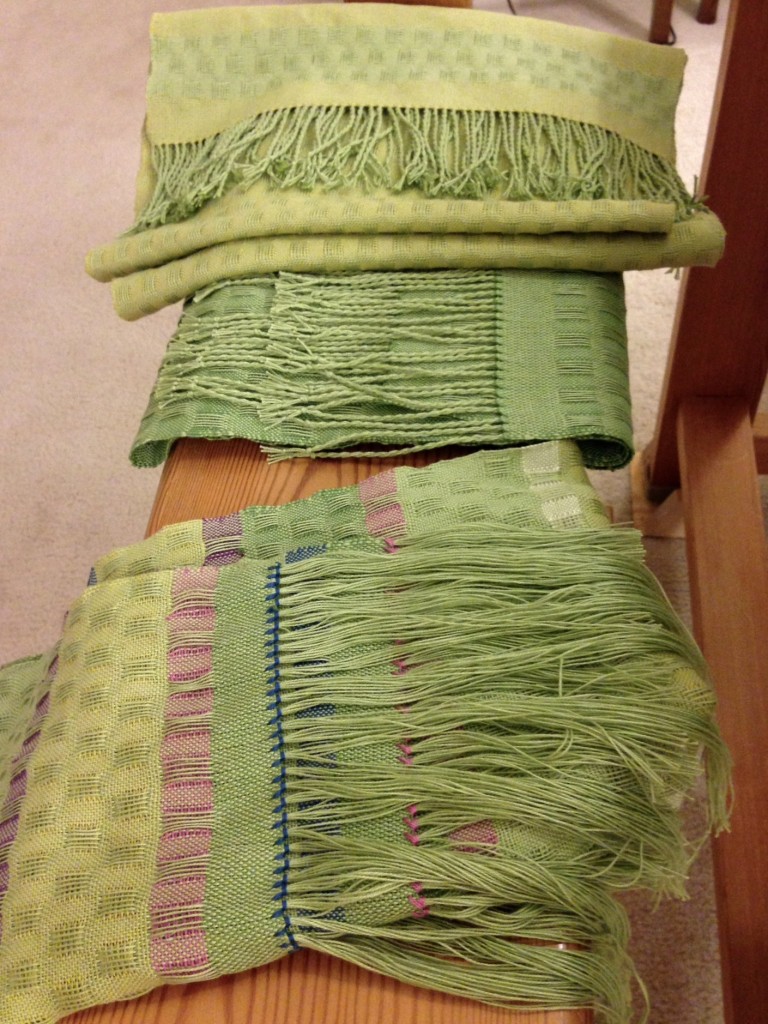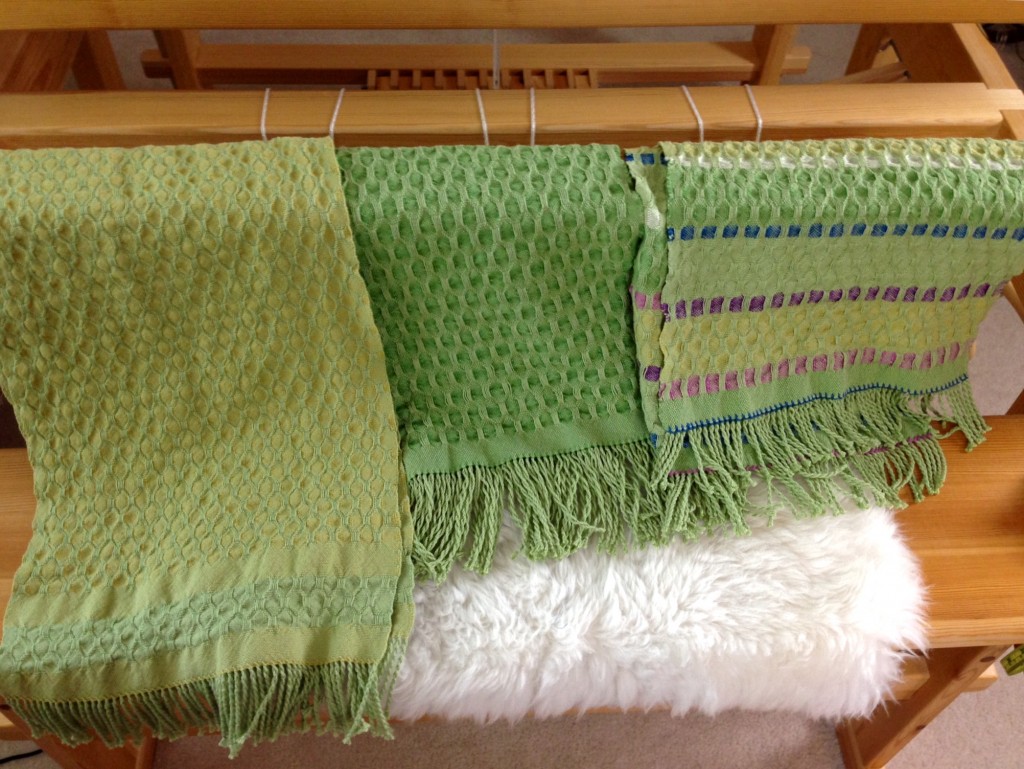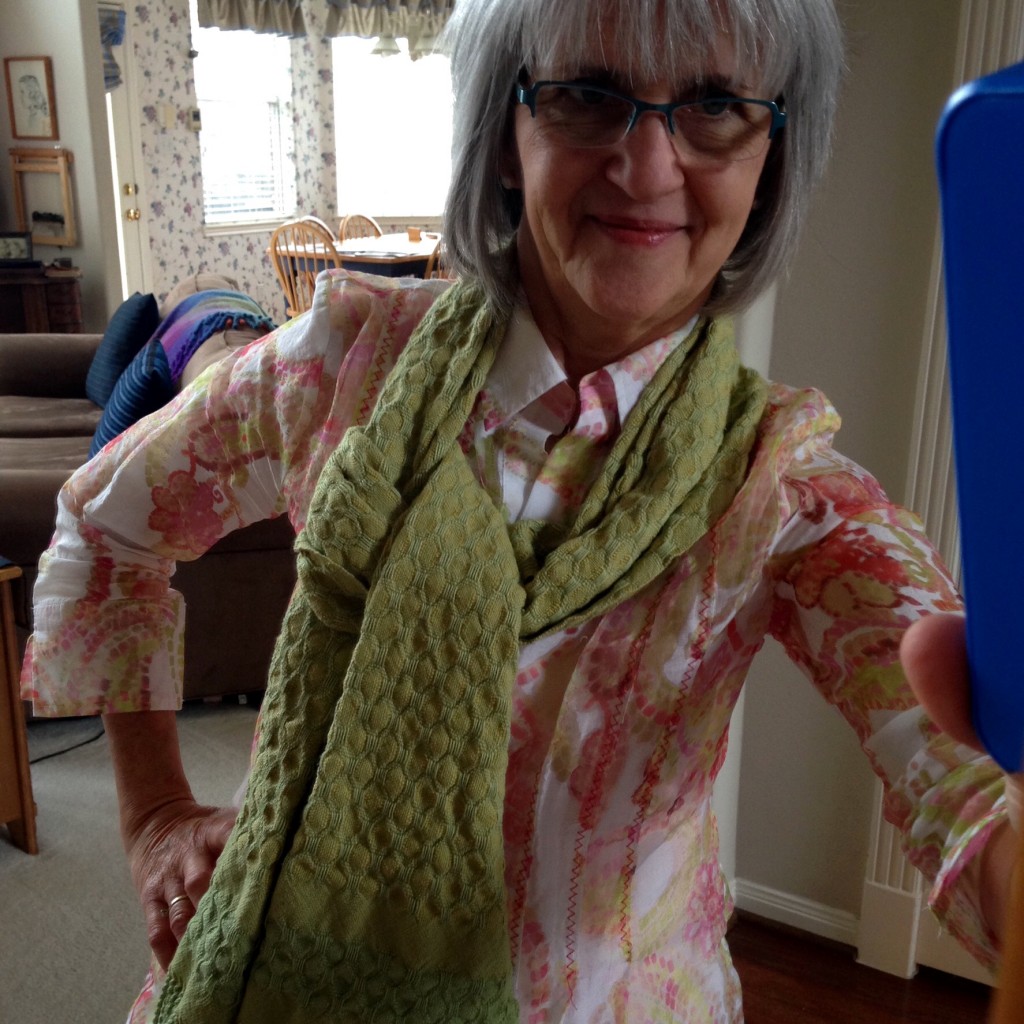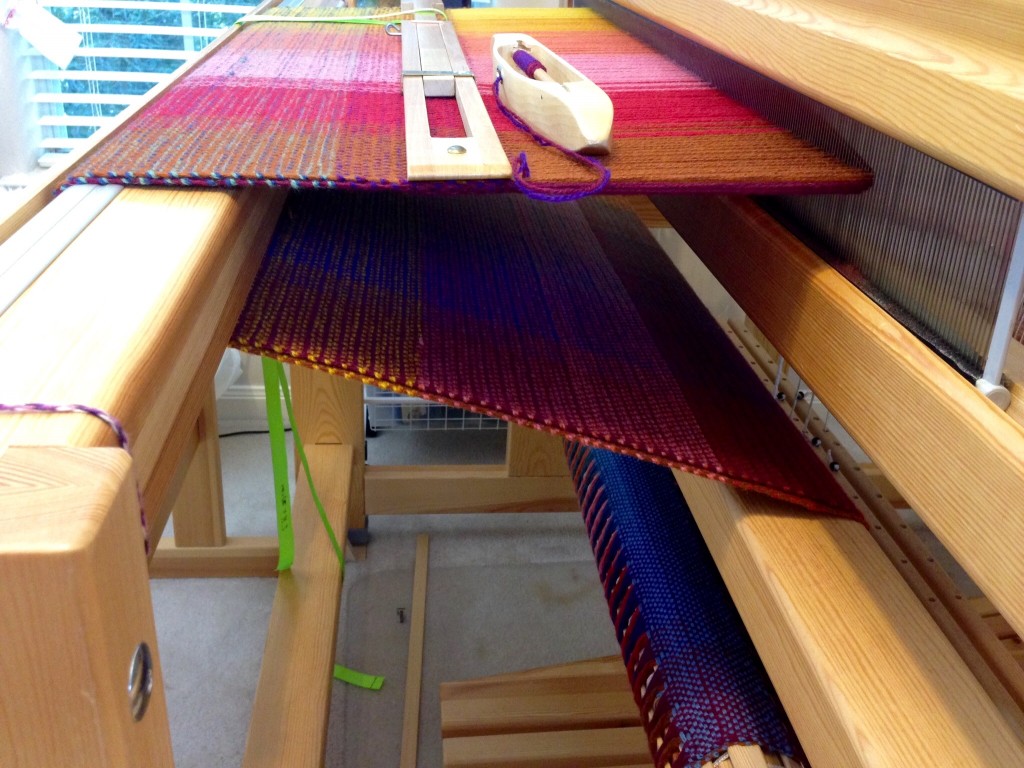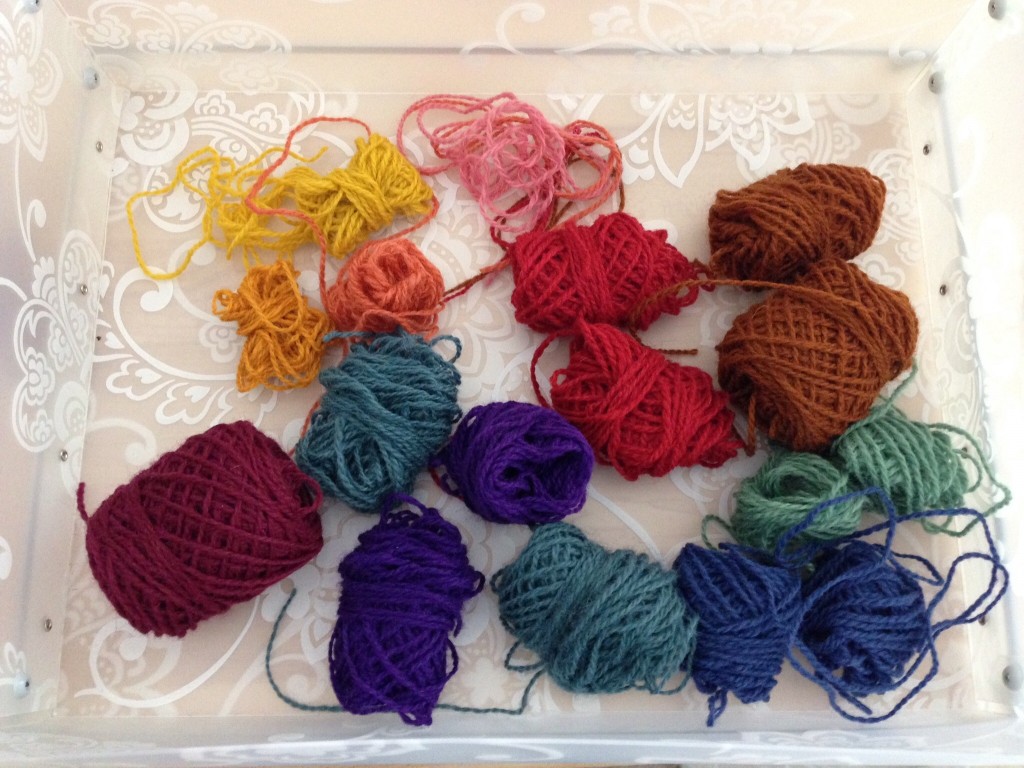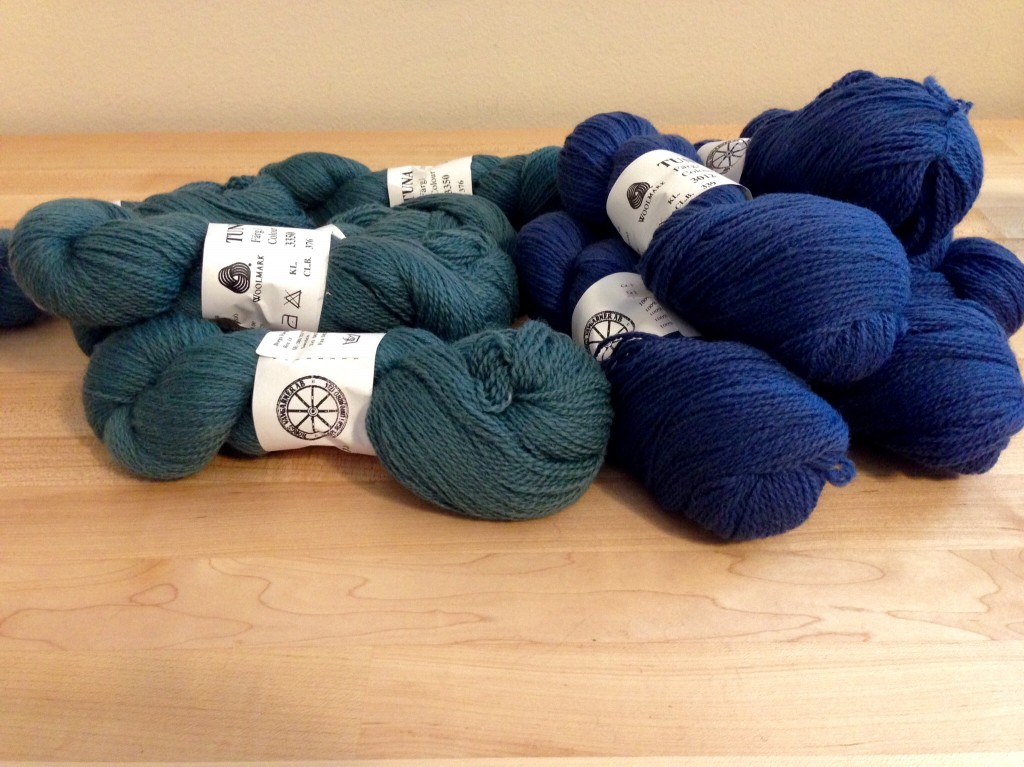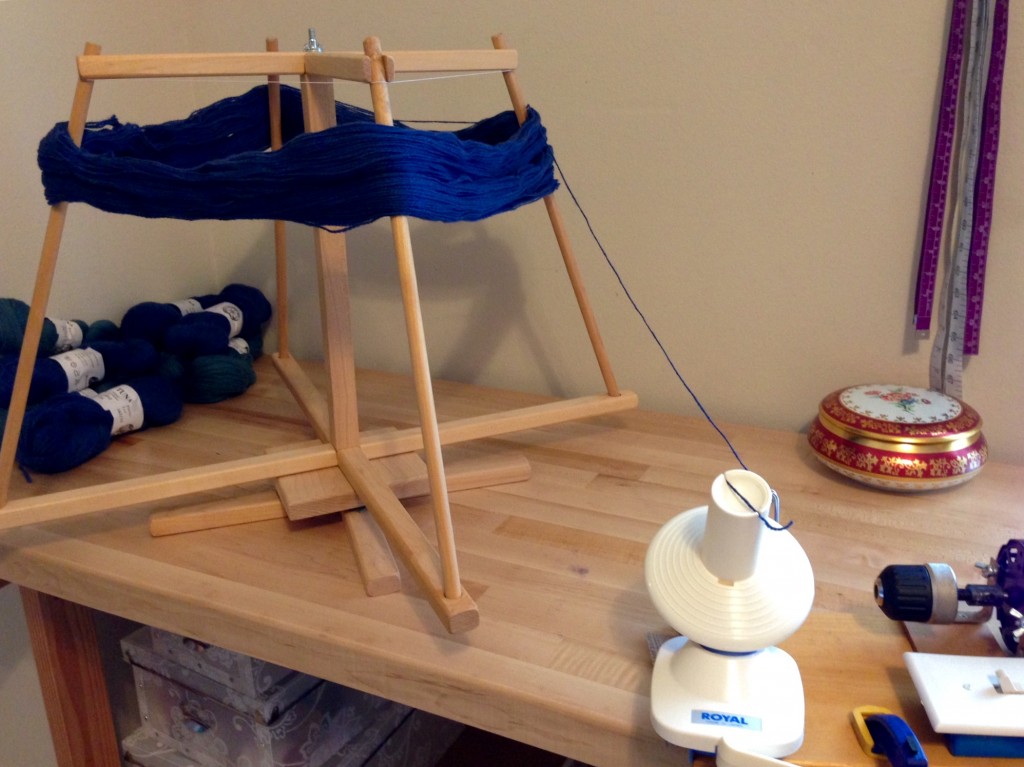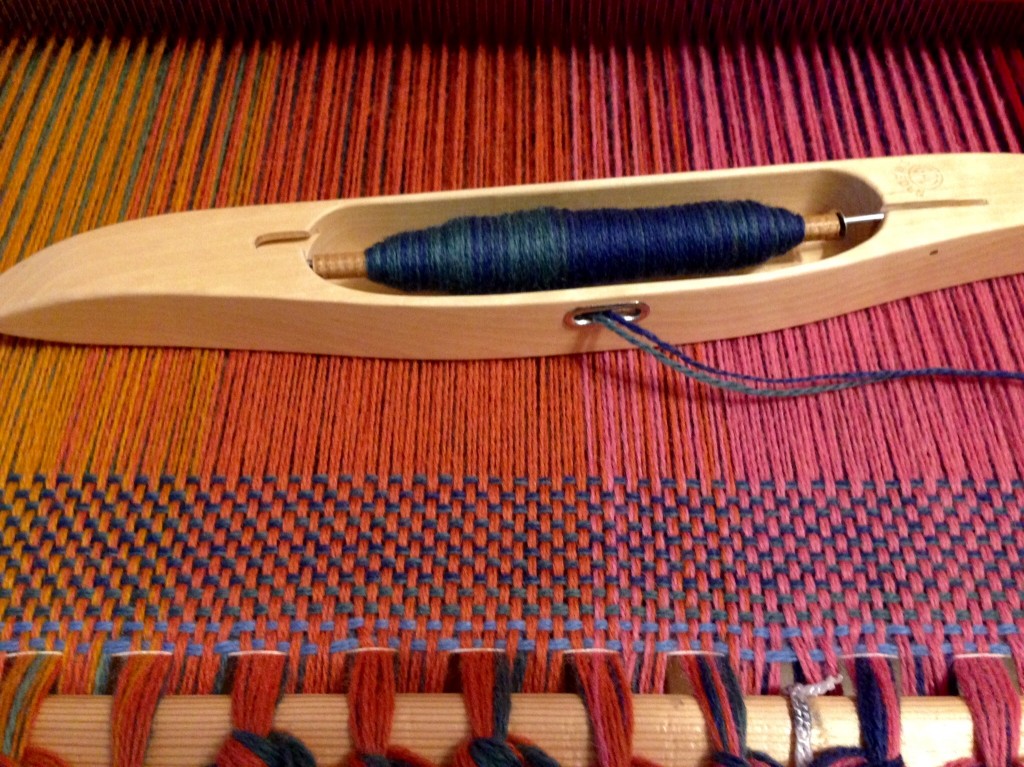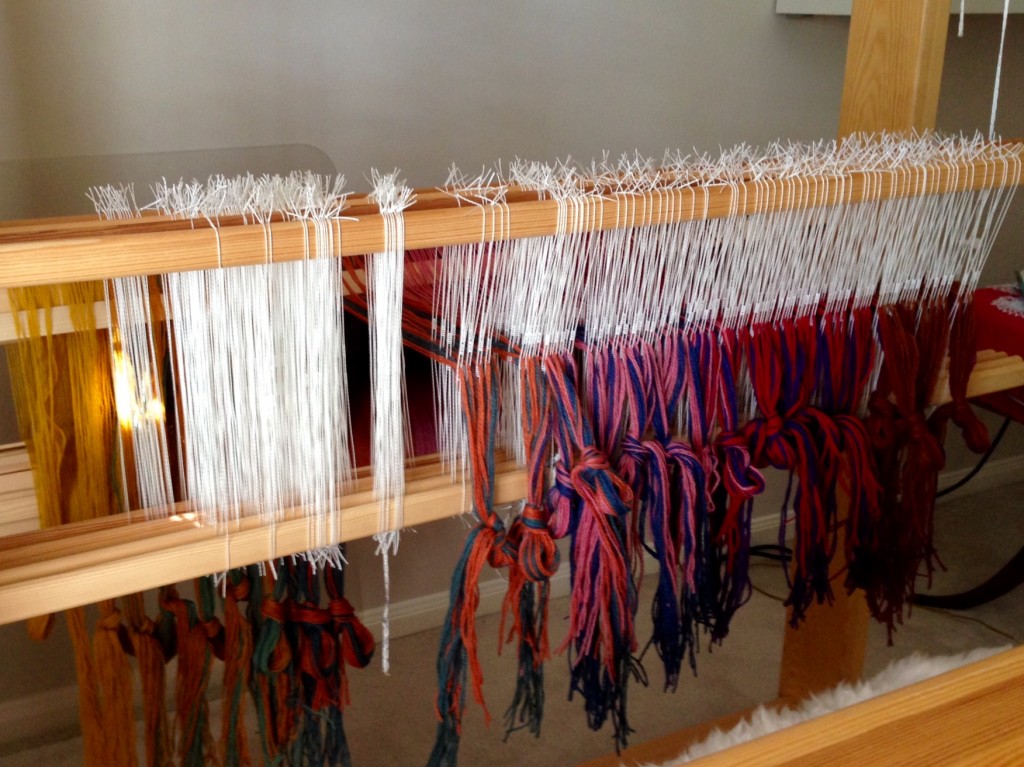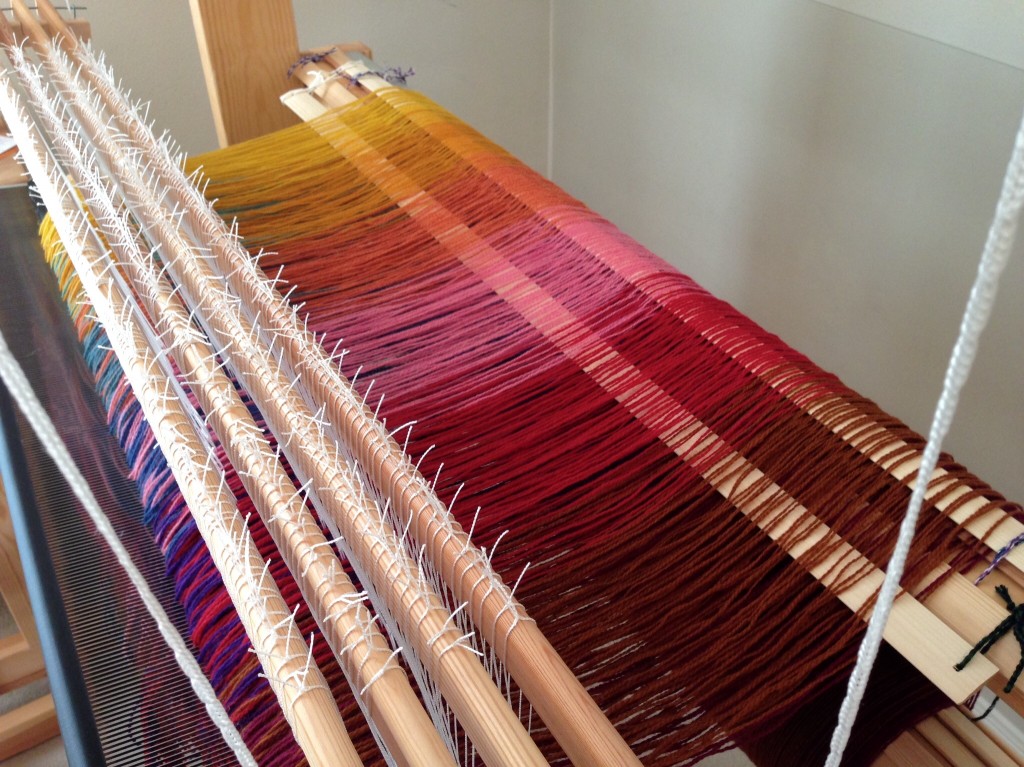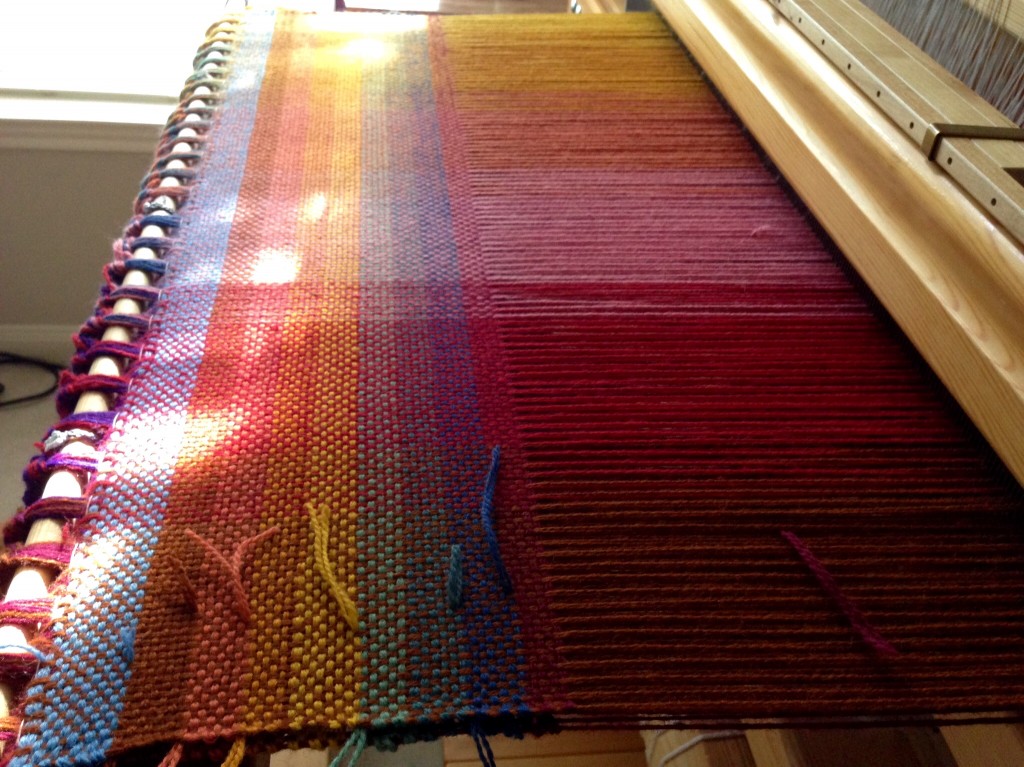Two shuttles required! With double binding rag rugs, each weft pick is double. The two wefts fall into place above and under each other, creating a two-sided fabric. The solid green that is visible on the top of this rug forms a different shape underneath. On the top side it looks like a cross from this angle. Underneath, it looks like a capital “I.” As in, “Me, myself, and I.”
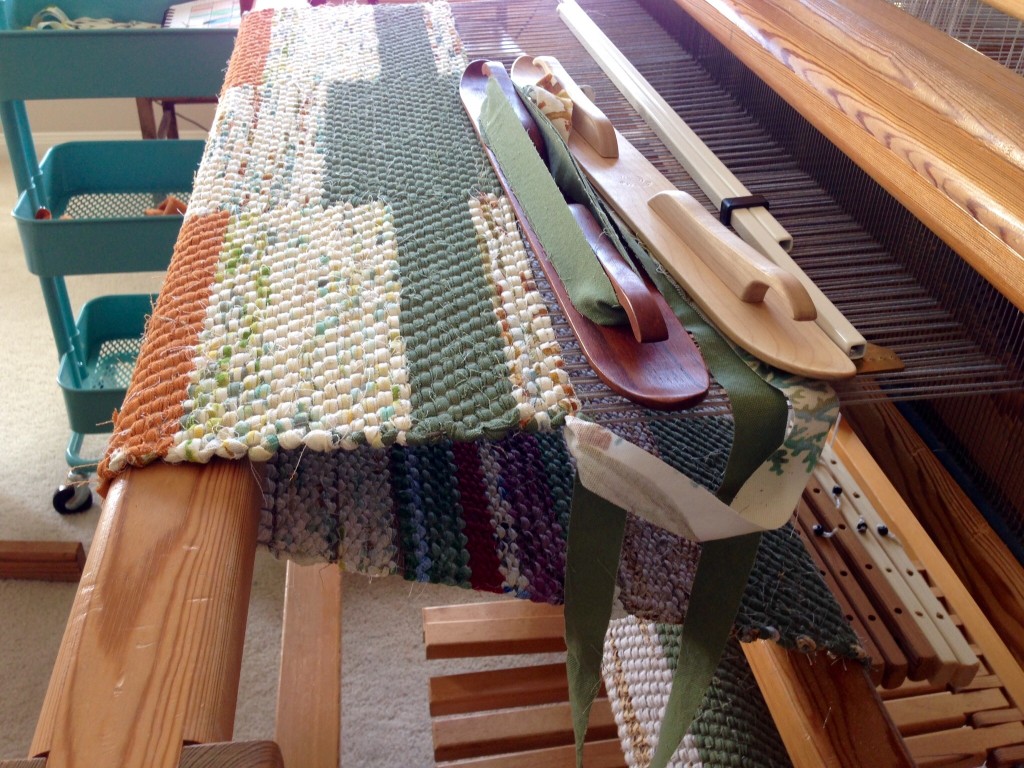
One interesting thing about designing double binding rag rugs is that I end up with two rugs in one. Simply turn the rug over for a different look. When the cross is up, the “I” is not seen. Flip the rug over, and the “I” is seen, but the cross remains hidden.
Pride can ruin people. The essence of pride is comparing yourself to others, and putting yourself above. Like most people, I find it hard to deny my own flattery. But being humble means refusing an inflated view of yourself. During this week when the cross of Christ is remembered around the world, I want to make sure my “I” is under the cross. The one who humbled Himself more than we can imagine leads the way. Woven in, behind the cross, my “I” finds its true identity–no more, no less.
May you show your humble side.
Isenhower with an “I,”
Karen

